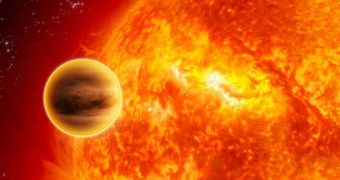New data appear to indicate that it may become possible to use the interactions of exoplanetary gravitational forces to determine the existence of space bodies that would otherwise remain hidden from sight.
Recently, the international astronomical community entered a frenzy when a team announced that it had potentially discovered a new exoplanets based on the effects it caused on an already-known one.
This is similar to how planet Neptune was hypothesized, and later observed, in our own solar system, Astronomers found perturbations in the orbit of Uranus, and concluded that another planet must by exerting its gravitational pull on the gas giant.
The same basic principle can now be applied to exoplanetary research, astronomers say, quoted by Universe Today.
Oddly enough, the case that brought this issue into light was one in which a new exoplanet was not found based on interactions with an already-discovered extrasolar planet.
Earlies this year, analysis of a planet orbiting the star GSC 03549-02811 revealed that another space body may in fact be tugging on it.
The gas giant TrES-2b was already known to orbit this star, which lies an estimated 750 light-years away, in the constellation of Draco.
Mislis et al. reported this June that they had seen deformations in the orbit of TrES-2b, that could have been indicative to the presence of another planet around the parent star.
Subsequent observations by a team of astronomers from the University of Arizona has demonstrated that no such perturbations existed, and attribute the error to glitches in the other team's data processing techniques.
Even if the theory proved wrong in the case of this particular exoplanet, experts believe that it may be used successfully in other instances, for detecting hidden space bodies.
The approach is so promising that a group of German investigators from the Astrophysikalisches Institut und Universitäts-Sternwarte, led by G. Maciejewski, decided to scout for new exoplanets using just this technique.
The group has already published a paper in which they announce that a new space body may be lurking around known exoplanet WASP-3b.
The newly-discovered planet may have the mass of 15 Earths, and may lie in a 2:1 orbital resonance with the known one. Follow-up observations are now being conducted to verify the discovery.

 14 DAY TRIAL //
14 DAY TRIAL //